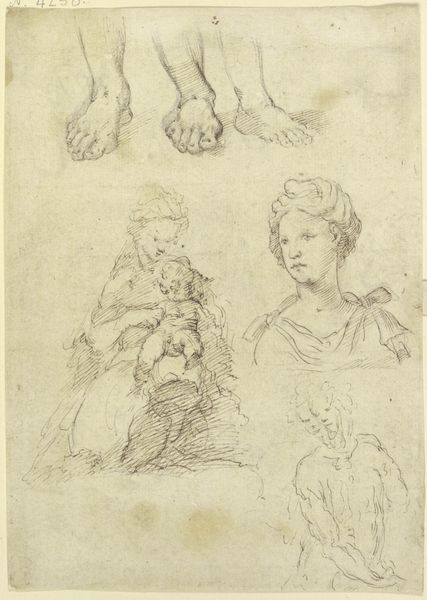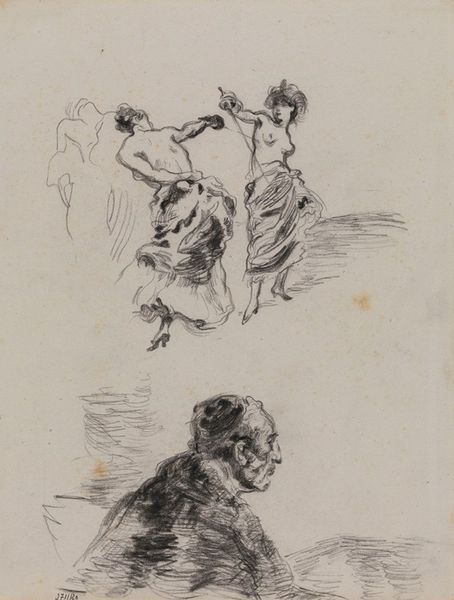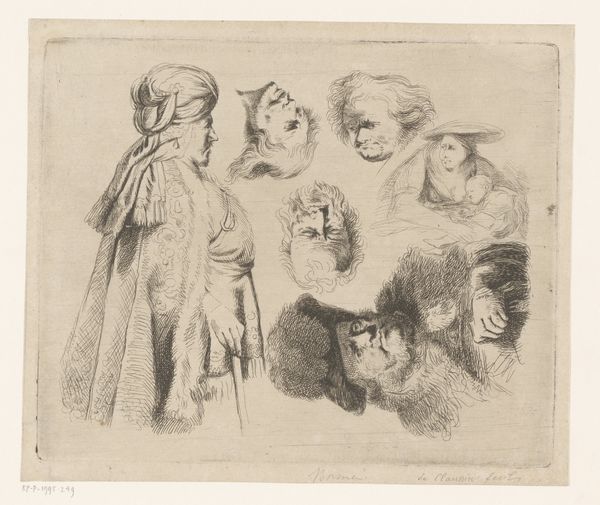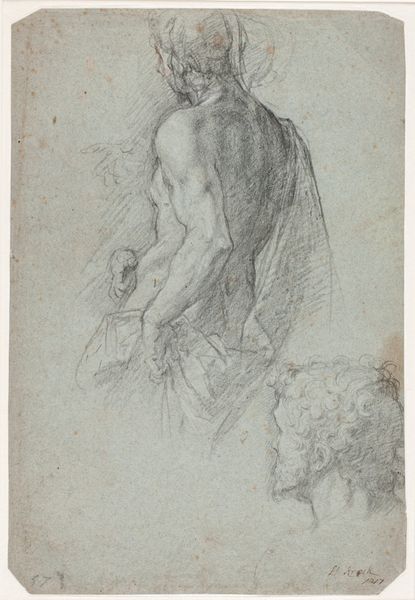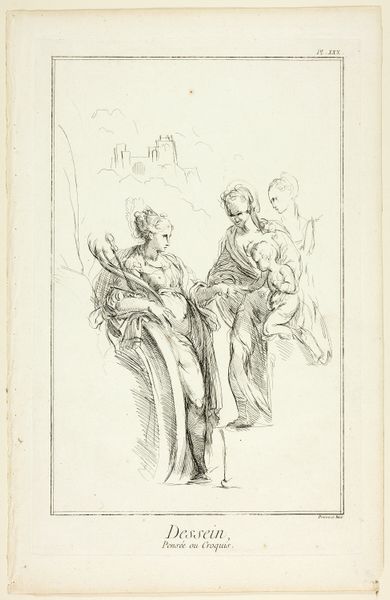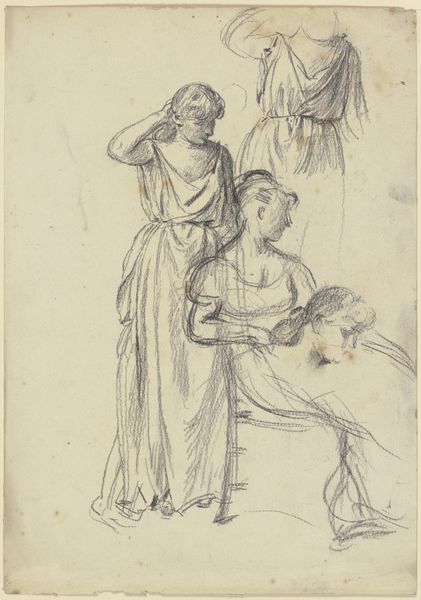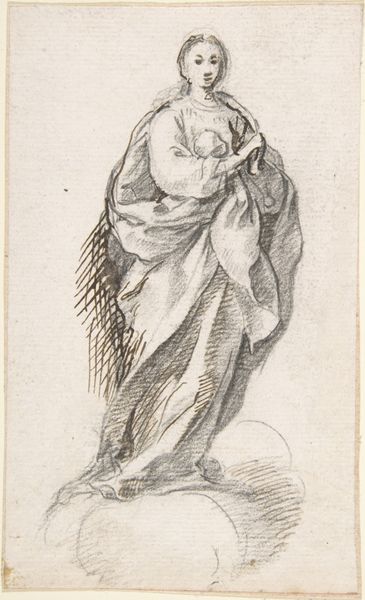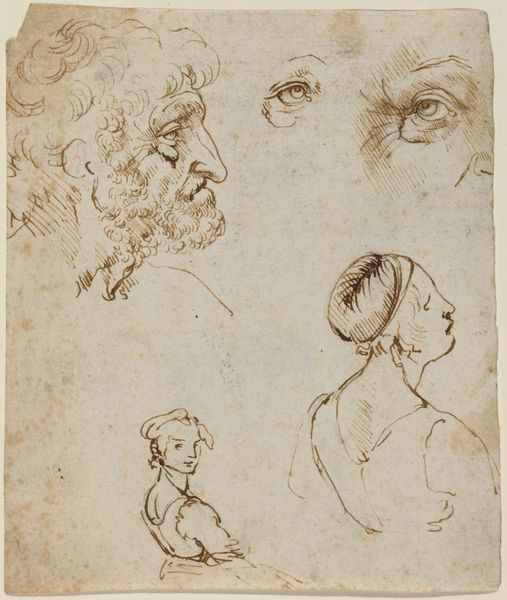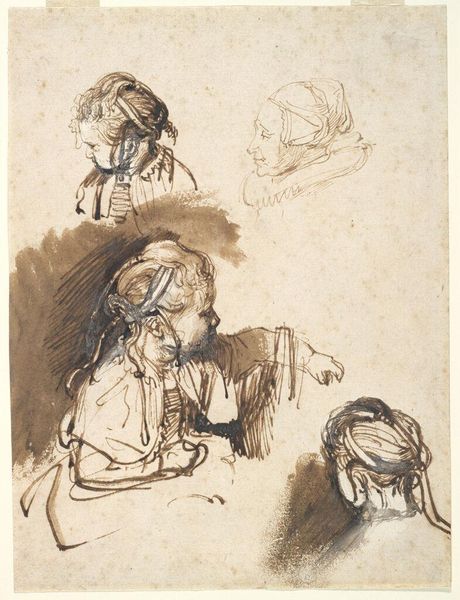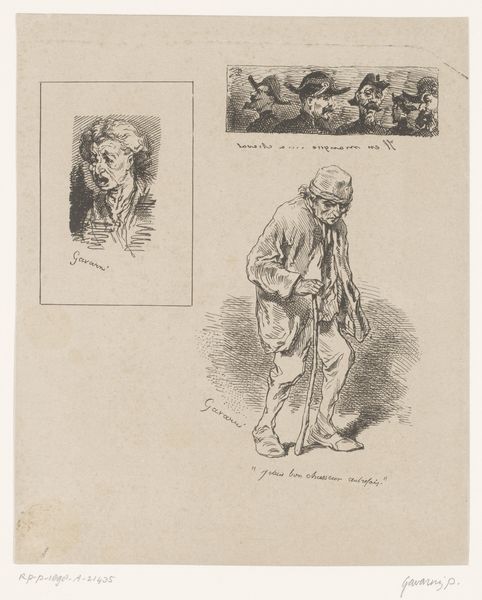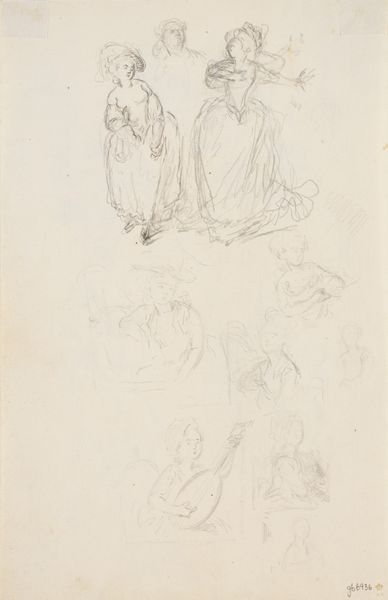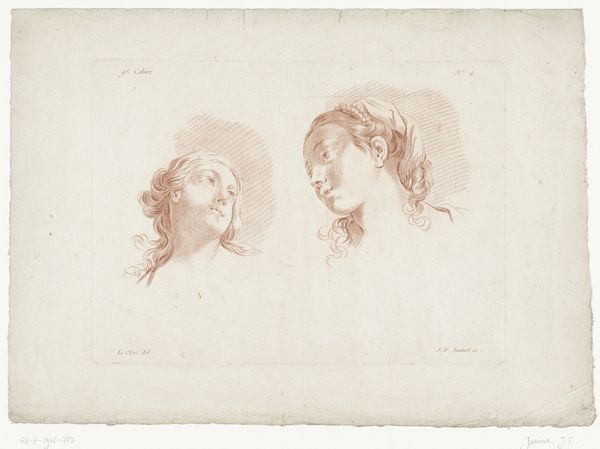
drawing, print, etching
#
portrait
#
drawing
#
baroque
# print
#
etching
#
figuration
Dimensions: sheet: 7 1/4 x 5 3/4 in. (18.4 x 14.6 cm)
Copyright: Public Domain
Curator: Here we have "Figure Studies, from Drawing Book," an etching by Frederick Bloemaert, created between 1650 and 1656. Editor: My first impression is of quiet observation. The delicate lines give a sense of intimacy, like we're glimpsing the artist's private studies. Curator: Bloemaert lived during a period of immense upheaval, including the Thirty Years' War. While this print might seem apolitical, the very act of studying the human form—particularly with a focus on hands and faces, sites of expression and labor—resonates with the era's complex understanding of human agency amidst conflict. What is not said sometimes speaks louder than any obvious reference. Editor: The composition, though fragmented, possesses a striking balance. Bloemaert's use of light and shadow, achieved solely through line variations, defines the forms beautifully. Notice how the drapery at the top catches light in some areas, and how those strong lines articulate each plane. Curator: I think this work exists in conversation with a history of artistic representation that has consistently privileged certain bodies and forms of labor, so while he may be showing humanity I do not want to forget who has had to pay for these advancements historically. Editor: Certainly, and viewing these "Figure Studies" solely as studies also illuminates the process of artistic creation. It invites us to contemplate the underlying geometry and the meticulousness required to master form. We must consider not only the depicted human figures, but how these images come together, to what effect, as their presence defines its pictorial structure and expressive effect. Curator: Considering its presence within a 'Drawing Book', these aren't just exercises, but possibly an invitation for aspiring artists to learn from a master. So it seems imperative we think through how access to artistic knowledge was then, as now, never equitably distributed. Editor: Absolutely. Well, I find this to be such an interesting intersection of form and content. Curator: Indeed. It prompts us to look closer, not just at the technique, but the historical threads that shaped its creation and continues to inform its relevance today.
Comments
No comments
Be the first to comment and join the conversation on the ultimate creative platform.

